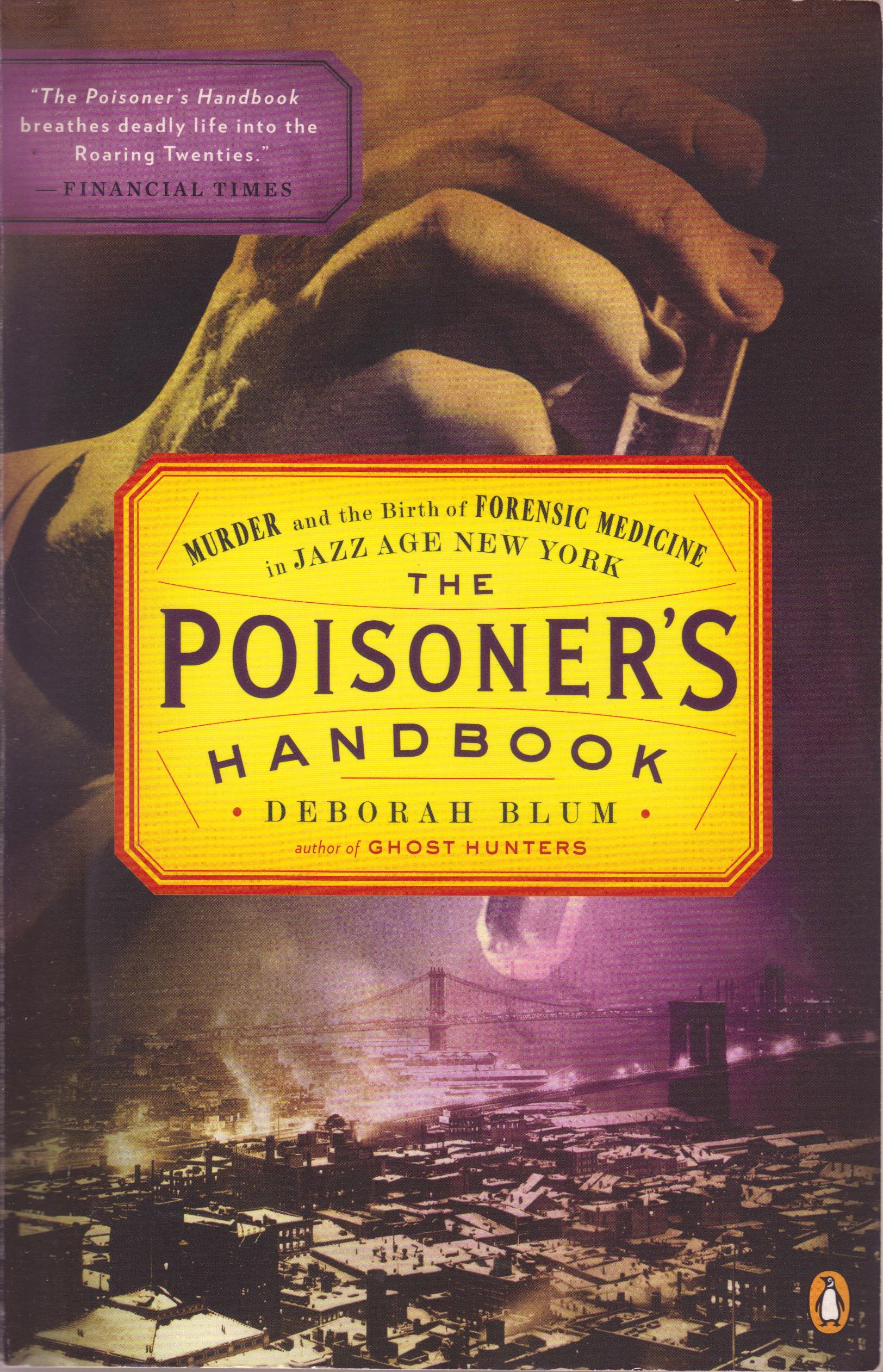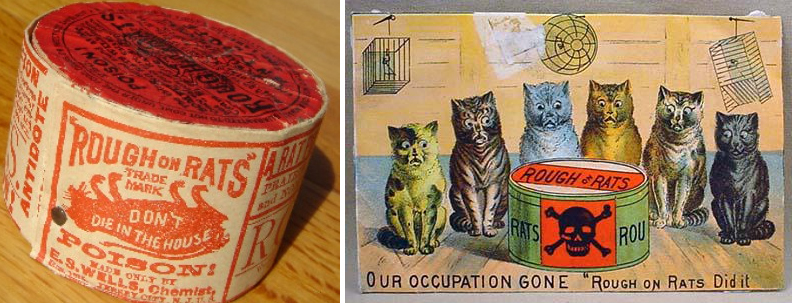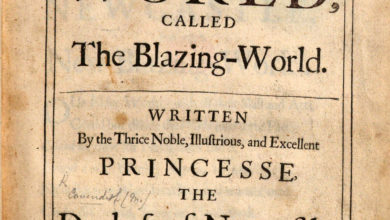
Note: information for next month’s book is at the end of this post. Also, there’s a super tasty vegan recipe!
Welcome back to the Skepchick Book Club! This month, we read The Poisoner’s Handbook: Murder and the Birth of Forensic Medicine in Jazz Age New York. The book was pretty much exactly what the title says, a look back on how the field of forensics was made respectable by the New York City Chief Medical Examiner (Dr. Charles Norris) during the era of Prohibition.
Before I get started, I want to point out that I am not trained as a chemist, so I didn’t necessarily pick up on the scientific inaccuracies in the book. The top-rated Amazon review of this book says the following:
It is utterly amazing and incomprehensible that this mistreatment of science was allowed to proceed past editorial stage. A reader with a very basic level of scientific literacy will likely notice many of the mistakes. The fact that Blum used the period literature for her research is not an excuse for the extreme sloppiness of the book. Fact-checking with a high school-level chemistry textbook would have gone a long way to make “The Poisoner’s Handbook” at least readable.
You can go check out the negative reviews for yourself. Honestly, when I was reading through this book, I kind of skimmed over the strictly chemistry parts (descriptions of processing slurries and such), and focused more on the other parts of the book, like the true crime stories and the stories of Dr. Norris and Dr. Gettler. So, I probably enjoyed the book more than people who understand chemistry (I’m more of an immunology person).
Prohibition was passed in order to curb alcoholism, but in fact, it increased the number of deaths from drinking bad alcohol. Murderers were able to take advantage of this era because so many people were drinking toxic bathtub gin, antifreeze-laced cocktails, and straight-up wood alcohol. Even people drinking the “good” alcohol were drinking so much that they were dying of alcohol poisoning, because rather than being able to enjoy a weakly-alcoholic beer, they were chugging a fifth of whiskey in less than ten minutes. The people who really paid the price of Prohibition, though, were the poor people, because the rich people still drank alcohol, they just knew how to do it “legally” and they were able to pay for it.
However, thanks to the two main characters of the book, Dr. Norris and Dr. Gettler, forensic science started to have established standards, poisons were able to be more easily identified, the coroner’s office lost its reputation for corruption, and it became much harder for murderers to get away with their crimes.
The part of the book that I found the most amusing was the section on various rat poisons that were available. There was Rough on Rats (soot + arsenic), Rat Dynamite (bran + arsenic), and Lyon’s Poisoned Cheese (a soft, pale block of arsenic).

Each chapter featured a different poison and a different murder case that was solved (at least, with regards to which poison was used, not necessarily who did the crime). Here’s a list of some of the chapters and a note from each one:
- Chloroform: There was a orderly, Mors, at an elderly home who was killing patients who were either about to die or just annoyed him, with chloroform, and he confessed it all to the police, although they let him go because they thought he was making it all up.
- Wood Alcohol: Used to denature alcohol to turn it into something that was supposed to be undrinkable, but people still drank it because they wanted to get a buzz from something.
- Cyanides: This chemical was popularly used to fumigate basements–unfortunately, if it made it through the vent, it would kill the residents of the house.
- Carbon Monoxide: This chapter told the story of an individual, Mr. Travia, who was accidentally poisoned with carbon monoxide, and when he woke up, he thought he had murdered his landlady (who was dead of CO poisoning next to him). So, he did the next logical thing: hacked up her body and tried to throw it in a river. Unfortunately, the police caught him with his suspicious package and covered in blood. But thanks to forensics, he was exonerated because he didn’t kill his landlady. What a story!
- Radium: This chapter contained the story of the factory women who painted clock dials with Radium paint (so they would glow in the dark). Unfortunately, because they had the habit of licking their paintbrushes, they ingested a lot of radium, which was absorbed by their body (in place of calcium) in their bones, and they were slowly irradiated to death.
One final thing to add: when I was doing some research on this book, I found this really cool website that shows you images of what each element looks like. Check if out if you’re interested!

Featured Recipe: Balela
This isn’t really a themed recipe (except for the fact that I poisoned it, muhaha!), but it was super yummy and vegan (which is not normally my style) so I wanted to share it. Here’s how I make it:
Ingredients:
- 1 can of chick peas, rinsed
- 1 can of black beans, rinsed
- 1 pint cherry tomatoes, halved
- 1/4 cup fresh parsley, minced
- 1/2 red onion, chopped finely
- 1/4 cup good quality olive oil
- 3 Tbsp apple cider vinegar
- 1-2 Tbsp fresh-squeezed lemon juice (approx 1/2 lemon)
- 5 cloves garlic
- salt and pepper, to taste
Prep:
- Add together chick peas, black beans, cherry tomatoes, parsley, and red onion in a large bowl.
- In a small blender or food processor, blend together the olive oil, vinegar, lemon juice, and garlic, until the garlic is completely pureed. (I use a hand blender, personally.)
- Mix together dressing with bean mixture in large bowl, and season with salt and pepper.
- This recipe becomes much tastier if you let it marinate overnight in the fridge. Eat it by itself or toss some into some pita bread!
Next Month’s Book: Ha!
Next month, we will be reading Ha! The Science of When We Laugh and Why by Scott Weems. I’ll put up a post on May 4th (and the Boston Skeptics will be meeting up on May 3rd, so check out our Facebook if you can make it to that.)






Not poisoned? All vegan food (indeed all vegetables) are intrinsically poisonous! (Seriously, as a non-vegan, Mary’s bean salad was totally delicious. I’m tempted to make it myself next time I need to bring food to some event.)
I checked most of the bullet points in the first two 1-star Amazon reviews (including the one Mary linked to and this one, and found most of them were either incorrect or ambiguous. Some of them may have been simple typos or transcription errors that had been corrected in my Kindle edition. For example, the complaint that Blum seemed to think that wood alcohol, methyl alcohol and methanol are not three different names for the same chemical compound. In my edition, the very first reference to it makes it perfectly clear they are. Others mistakes I could not locate in the text. Some of the more technical points (the Reinsch and Marsh tests, for example) are far beyond my knowledge of chemistry (i.e. high school many years ago) and might be accurate. But most of them seemed to me misreading the overly simplified explanations of the science. For example, the references to volts and amps and to methanol dissolving into acetic acid were both literally incorrect, but used standard layman’s terms. I personally like my popular science books to be more science and less popular, but I don’t think this is a fatal flaw.
The small part I do know something about (not a lot, but some) is radioactive decay, and I thought the two-page description of it in the context of radium poisoning was miserable. (The first reviewer described it as “not even wrong”.) I think it could have been re-written in about the same number of words to be accurate and to actually teach the reader something about atomic physics, nuclear instability and radioactive decay chains. It would also explain why radium is particularly pernicious. (A single radium nucleus decay results in not one by many alpha particles of varying energies in quick succession due to a chain of decay products with very short half-lives.) Also, describing gamma rays as particles with no further explanation, no reference to photons, and no reference to the wave-particle duality of light, just rubbed me wrong. I wish Blum had run this chapter, or at least these few pages, past a physicist.
Most of the content of the book was history, though, and as far as I could tell, it was accurate and well written. There are copious references in the back (mostly to contemporary news articles and forensics textbooks and journal articles written at the time), but unfortunately not directly linked (at least in the Kindle edition) with footnote numbers. Doing various random searches on the various murderers and poisons, I didn’t find any serious discrepancies with the book.
All in all, I found The Poisoner’s Handbook interesting and enjoyable, but it could have easily been so much better.
It’s a good book, but one important warning. While I was reading it, my wife brought me a cup of tea…and she’d made it with a different kind of tea than I usually take. First sip nearly had me spitting up on my iPad.
So you’ll suddenly become extremely sensitive to subtle variations in the taste of your food, and be looking suspiciously at your significant other if something seems a bit off.
Don’t worry, I’m still…ack. *choke* aaaaaaaaarrrrrrghhhh…
I definitely don’t accept almond dishes from anyone anymore. ;)
Don’t go to an Armenian or Greek wedding, then…
Yes, someday if I’m dying while blogging, I’ll take the time to type out “aaaaaaaaarrrrrrghhhh” rather than screaming, “Dial 911!”
True story: one time, in a previous apartment, it sounded like the apartment below me was being broken into, and I told everyone in a WoW chat room. (Although, I did call the police at the same time.) I just couldn’t help live-chatting it!
Thoroughly enjoyed it. The Poisoner’s Apprentice expertly walked the line between informative, entertaining and ghoulish. My only complaint was that it tied forensic science a little too closely to one “rock star”. As with all scientific endeavors it was the result of a lot of people’s work.
That is true, it didn’t really talk about anyone other than Norris and Gettler. I don’t know too much else about the history of forensics, but another related book you might want to check out is “The Killer of Little Shepherds,” which I did on a previous book club.
I enjoyed the book quite a bit, but I was saddened by the fact that a lot of the tests were confirmed and calibrated by killing dogs with the various poisons in question. Different times, and all that, but still…
I know! I hated reading about the tests on the poor dogs. And all the dead children due to unknown ingredients in “medicine.”